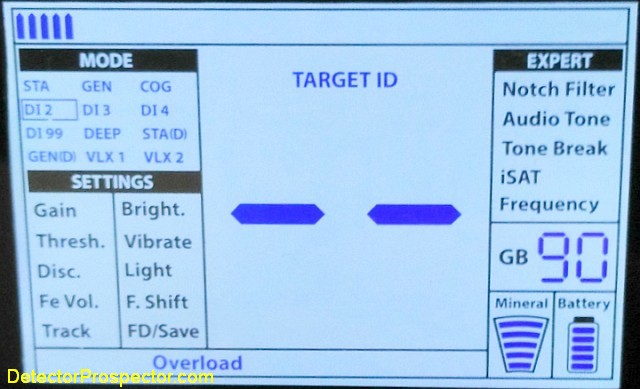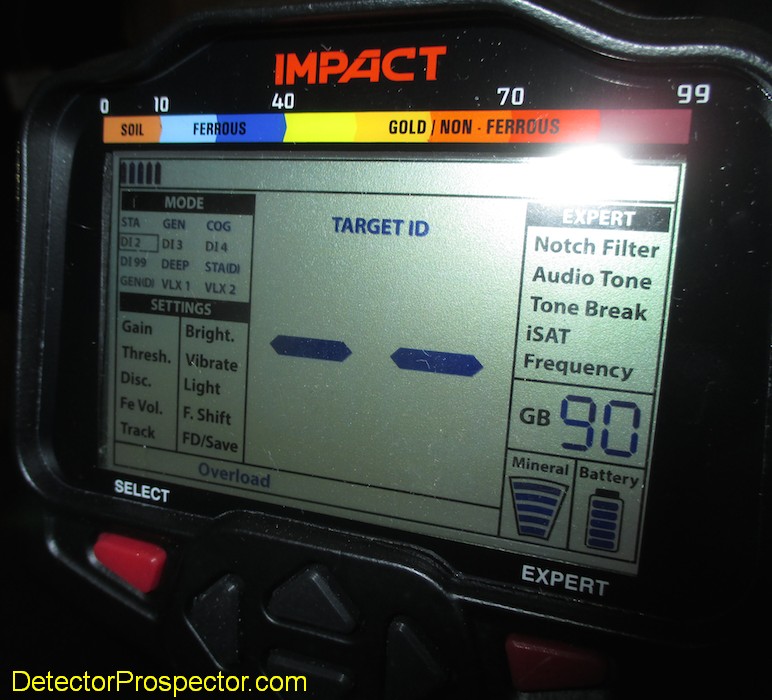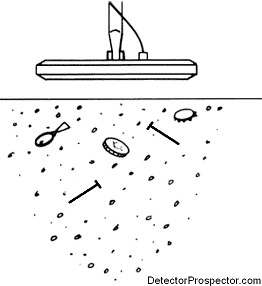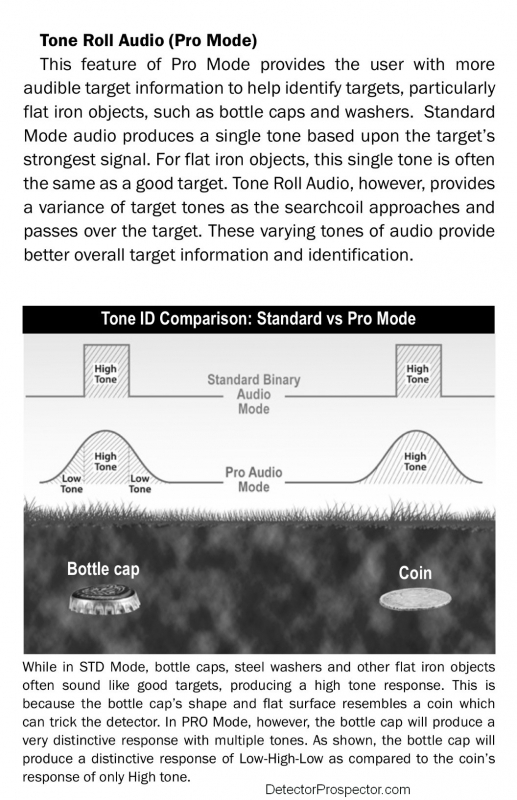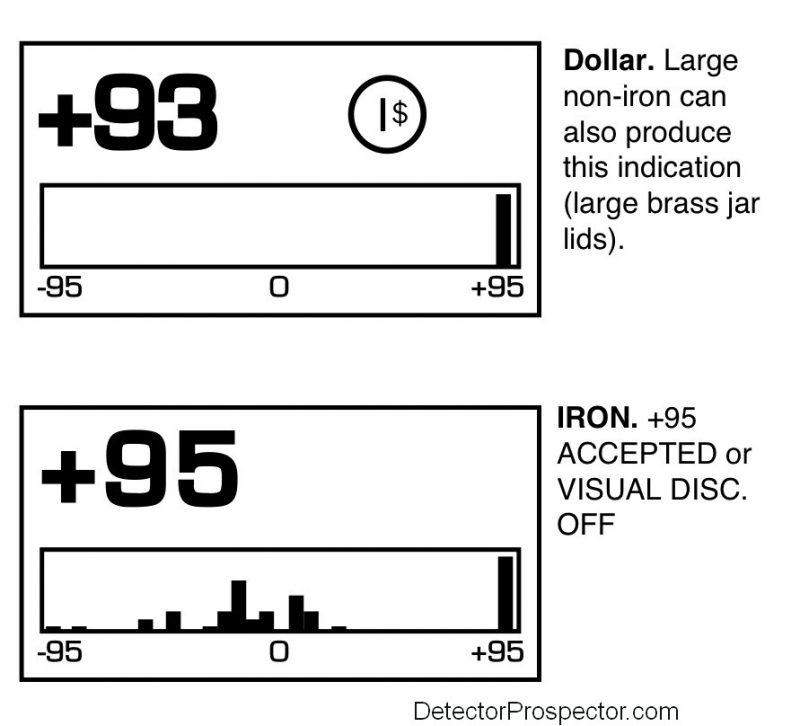-
Posts
19,751 -
Joined
Content Type
Forums
Detector Prospector Home
Detector Database
Downloads
Everything posted by Steve Herschbach
-
Hi Jason, My new thing personally is selectable frequency VLF. In theory if one can be made that really does the job it would negate my need for two or more VLF detectors. The White's V3i made a good stab at it but is overly complicated and bulky. The X-Terra series requires a coil change to change frequencies but at ten years old now is a bit behind when it comes to performance. The DEUS is the obvious leader in this department right now but I will never be fond of the detector in a coil concept. I want an expensive control box with lots of cheap coil alternatives, not a detector where every coil is a new detector and priced as such. I admit I appear to be in a minority there. Nokta has to be gunning for DEUS like performance with the Impact so it may well prove to be more like what I am seeking. At this point though I personally am fixated on what the high end frequency will be, and Impact at 20 kHz is likely to be trumped by DEUS V4 at around 55 kHz. There is more to small gold performance than just frequency however so time will tell. I have to keep my DFX because it runs my Bigfoot coil but I would not mind replacing all my other VLF detectors with just one machine.
-

Finally - The QED Arrives?
Steve Herschbach replied to Steve Herschbach's topic in Metal Detector Advice & Comparisons
Mike, QED is simply the name of the detector under development that is supposedly going to come to market. Long story short, a low cost alternative to the Minelab PI. Where the name derives from I do not know. ads by Amazon... -
I would buy one of those.
-
The Tesoro Sand Shark is incapable of ground balancing and so is only suitable normally for beach detecting. It can be used in low mineral ground but then again, so can a good VLF. Bottom line, the Sand Shark is really a beach detector, not a prospecting machine. The Garrett Infinium came out before the TDI. I think the TDI has the edge coil to coil by a slim margin but the main difference is the vast number of coils available for the TDI versus the Infinium, which if leveraged properly also give an advantage. The Infinium being discontinued now means unless you find one of the few left sitting on dealer shelves can only be had used. True story also. Every one of the four Garrett Infiniums we had at Moore Creek eventually failed and had to go back for service, plus the one that one of my partners had. Five out of five! When you handle one you would think they are bullet proof but we proved differently. Unless you need waterproof, I would always chose a TDI over the Infinium.
-

SD 2200 Or TDI ?
Steve Herschbach replied to 44Blackhawk's topic in Metal Detector Advice & Comparisons
The SD 2200 is discontinued and service is basically unavailable. If having a warranty or being able to have the unit serviced is a concern, the TDI SL is the only option of the two. -
Nice cake - Happy Birthday & Anniversary!
-
Note added Feb 17, 2017 - Official Nokta Impact Release Information The Nokta Impact is currently in field testing. From Dilek at http://www.dankowskidetectors.com/discussions/read.php?2,114963,117790#msg-117790 "FYI - Only a few are out for testing, not all. We had delays due to the cable supplier. More to be sent out in the coming 2 weeks." For those that do not know the Nokta Impact has been in the works the last couple years and should be available to buy in early 2017. It is a machine that can run at any one of three different frequencies (selectable frequency) but not all three at once (multi frequency). The three frequencies you can choose from are 5, 14, or 20 kHz. 5 kHz is a solid coin hunting frequency. 14 kHz is typical of many "do-it-all" detectors on the market and a good compromise frequency for all targets. The main reason this machine has been mentioned on this forum is the 20 kHz option, which is a very solid nugget hunting frequency. I would not say this is a prospecting detector per se, but it is an option for somebody who wants to do it all with just one detector. The machine also features good ergonomics, a hidden cable design, and wireless headphone option. Price unknown at this time but knowing Nokta it will be very affordable. Coils for the machine will be new design so no existing coils will work on the machine. The following photos are from prototypes spotted on the internet and so changes may be seen in the final product.
-

SD 2200 Or TDI ?
Steve Herschbach replied to 44Blackhawk's topic in Metal Detector Advice & Comparisons
I agree, SD 2200. Main thing is the battery - they do go bad with age or possible overcharging. A new Minelab replacement runs $128 but there are aftermarket options. -
These are all excellent ideas Tom. Especially more power/closer to Pro performance. I still look at getting a TDI SL every once in awhile simply because of the ergonomics. There are places in California where it is very steep, hands and knees type prospecting and in thick brush to boot. The best thing going for the TDI SL is the light weight knock around aspect.
-
I found my largest nugget/specimen (1.93 oz, pic below) with the TDI and 12" coil in brush so thick I could barely force myself through it. If your machine is giving false signals from being lifted or tilted the machine is either not properly ground balanced, or the coil may be bad.
-
The original TDI and TDI Pro have excellent performance in pure PI mode. However, gold prospecting is all about how well a PI can perform while ground balancing. I was involved in the TDI development and therefore in 2008 pulled strings to get several of the very first TDI models off the production line shipped to my mine at Moore Creek, Alaska. I ran a pay-to-mine operation there and we provided detectors for those who did not have their own. I replaced four Garrett Infiniums with four TDI units, plus had one of my own. http://www.detectorprospector.com/steves-mining-journal/whites-tdi-moore-creek-alaska.htm The visitors by and large did bring their own detectors, and the GPX 4500 was new in 2008, so people were packing the 4500 and earlier models. Everyone was curious about the new TDI and frankly everyone always wants to see somebody knock Minelab off their pedestal. So lots of comparisons went on that summer, and the result was always the same. The Minelab's easily got big gold deeper and hit smaller gold better. My response was always the same "well yeah, for the money they should". That sounds good at a sales counter, but the fact is people get together with different detectors all the time, and word gets around quick. In any gathering it quickly becomes obvious that money saved on a purchase is false economy when people with more expensive machines are finding the gold while the less expensive machines struggle. This is excaberated by the most experienced people normally using those expensive units, while often the less expensive units are being used by less experienced people. Double whammy. It is not about opinions or bias or anything but simple observable facts in the field as seen by numerous people. The reason the TDI in any version is not selling well with nugget hunters is any Minelab from the SD 2100 on outperforms it for gold prospecting. The gold fields are playing out and it is a performance arms race out there. From the perspective of many people like me it's not whether or not we can afford a Minelab. It is whether we can afford the gold missed by using anything less. Most serious prospectors are extremely practical people, and there is less brand name loyalty or bias then people think. All you have to do to get a prospector to jump ship is show them you have a better mousetrap. Most debates among prospectors these days are over which is better - a GPX or a GPZ? Or maybe the SDC. Or if money is tight, which used Minelab? The TDI is old tech and if White's really wants to get back in the game with prospectors then it is imperative that the new patent tech be brought to market, and soon. The only thing keeping the TDI in play is price and ergonomics, and that advantage may be gone very soon. If Garrett ever puts the ATX circuit in a light, inexpensive housing with decent coils at a lower price the TDI is dead. If Nokta gets something to market using the expired Minelab MPS (Minelab SD series) patent the TDI is dead. There is no point Fisher bringing a CZX to market unless it is a TDI killer. The under $2K high performance market is ripe for the taking.
-

Finally - The QED Arrives?
Steve Herschbach replied to Steve Herschbach's topic in Metal Detector Advice & Comparisons
More caution than is the norm is in order here due to the many unknowns. However, I gather everyone here knows my thoughts on bashing and negativity so please avoid that here. They deserve some time and a fair hearing just like everyone else. As always field reports from regular purchasing prospectors will be very important. Still lots of room for improvement in high power non-VLF units selling for under $2K. All it has to do is beat the TDI and they have the advantage of US imports to Australia being overpriced. And only getting worse with dollar strengthening. -
I can't speak for Chris but I don't see myself doing anything like this in the near future. There are lots of other possibilities, the first being to join a club to get some hands on with knowledgeable members. Dealers like Rob Allison and Gerry McMullen offer training, and both Digger Bob and Ray Mills have done outings in the past. Even going to something like the annual Rye Patch hunt is a good idea when it comes to meeting knowledgeable people running lots of different detectors.
-
AussieMatt pointed out on another thread that lo and behold, the QED has appeared. I am not going to mess with all the long back history. Instead, it looks like we may finally have a new detector model from an independent designer after so many false starts over the years. If nothing happens to upset the cart reports should be coming in from Australia in the near future. Anyway, congrats to bugwhiskers and company. I truly do wish for it to go well for all involved.
-
Personally I like almost everything about the TDI SL. Great price, good feature set, good coil selection, and excellent ergonomics. Unfortunately it just lacks that little bit more punch I would like to see. In moderate to low mineral ground I found that just about any decent prospecting VLF in all metal mode does as well or better. For much of Nevada for instance a VLF is a better choice, especially when something like a GMT can hit small gold invisible to a TDI SL. It is only when you run into serious hot rocks or real bad ground, like the California serpentine ground, that the TDI pulls ahead with its better ground handling capability. While it is true there is nothing like it for the price new, I think it has been long since proven that serious prospectors are not shy of spending for performance and a just a grand more gets you a GPX 4500. And if money really is the main factor it is very hard to recommend the TDI SL to prospectors when a GPX 4000 can be had used for less money. I personally would get a GMT instead of a TDI SL if I could have only one or the other for prospecting because I think I could find more gold with the GMT. I would hazard a guess that more TDI models are used relic and beach detecting than prospecting.
-

Fisher F Series Vs The Minelab Xterra 705
Steve Herschbach replied to HardPack's topic in Metal Detector Advice & Comparisons
When in doubt, dig it out. You will never find a machine with perfect discrimination. Tests are good but you cannot duplicate the infinite combinations of ground and targets that can be under a coil in full 3D glory. I hunt by ear and so to my mind it is all about having plenty of audio information delivered to me. I generally prefer not to block any targets but to hunt purely by tones, and the more tones the better. Blocking or notching targets prevents vital information from reaching my ear. I am not saying I never do it however. There is a time and place for everything when detecting. -

Announcing The New Makro Racer 2!
Steve Herschbach replied to Nokta Detectors's topic in Nokta / Makro Metal Detectors
Well written review by Terry Soloman at http://www.treasurenet.com/forums/nokta-makro/522962-review-makro-racer-2-pro-package.html#post5207919 -

Fisher F Series Vs The Minelab Xterra 705
Steve Herschbach replied to HardPack's topic in Metal Detector Advice & Comparisons
Randy was not the first to envision the VDI scale as circular instead of linear. Regardless, I think the posts I made while you were working on yours cover it pretty well. -

Fisher F Series Vs The Minelab Xterra 705
Steve Herschbach replied to HardPack's topic in Metal Detector Advice & Comparisons
Finally, some detectors have a gated audio or binary audio design which is intended to make the machine sound clean and sure of itself. All targets resolve into a single VDI number and a single audio tone. This is problematic in dense trash and on these troublesome ferrous targets. Newer fast response designs have more of a real time audio that paints a fuller picture of what is under the coil but can also be hard for novices to deal with. Still, this is the basis for the XP DEUS and the Nokta/Makro designs. Garrett refers to it as "tone roll audio" and provide this explanation in the AT Pro manual: -

Fisher F Series Vs The Minelab Xterra 705
Steve Herschbach replied to HardPack's topic in Metal Detector Advice & Comparisons
To further illustrate. Most detectors are set up to deliver a single Visual Display Indicator (VDI) number or Target ID number by averaging everything under the coil. Single clean targets like a coin tend to deliver a tight VDI range, whereas ferrous targets can deliver mixed VDI numbers. Unfortunately most machines average the mix into a single predominate response. Minelab and Whites full spectrum displays can shows multiple VDI responses simultaneously. The diagram below shows the Whites SignaGraph display of a coin and a ferrous item. The visual response difference is obvious. If the operator discriminates out the low ferrous range, all that the machine delivers is that high end audio response. If everything is set to accept with ferrous low tone and non-ferrous high tone, now you get a high tone response on the coin but mixed low and high tones on the ferrous. The CTX 3030 Target Trace function serves a similar purpose. -

Fisher F Series Vs The Minelab Xterra 705
Steve Herschbach replied to HardPack's topic in Metal Detector Advice & Comparisons
I have not found a detector yet that will not "wrap high" on certain ferrous targets. Large hard steel nuts and bolts, axe heads, large washers, flat "tin" steel, broken square nails, etc. DD coils in particular can be problematic. It is mainly a problem for coin hunters, as the signals fall into the high coin range. The problem is made worse when people disc out the low ferrous range. The targets that produce these signals usually deliver mixed VDI numbers, both very low and very high. Discriminating out the low signals leaves only the high signal, which sounds like a coin. This is the main reason I usually do not block out target ranges but hunt via tones only. That way I hear the mixed responses that reveal these items for what they really are. Lower frequencies, lower sensitivity, and concentric coils can all help, as can full spectrum visual displays like on the White's XLT/DFX/V3i and Minelab Explorer/CTX models. -
There are not really many Makro Gold Racer and Racer 2 detectors actually in use, and the number of those owners that got the wireless setup is much smaller yet. That being the case there are not many people to do a review. I took a pass personally as I did not see investing in a dongle and headphones only good for one detector when the same money can get a Deteknix or Garrett system that can be used with any detector.
-

Fisher F Series Vs The Minelab Xterra 705
Steve Herschbach replied to HardPack's topic in Metal Detector Advice & Comparisons
F75 is 13 kHz, not 15 kHz. I made an edit to your post reflecting that. Both are good units. I find it difficult to say that getting an F75 would result in any better finds than what you could get with the XT705 and AT Pro you currently own. Faced with the same choice I went F75 due to ability to display target id in all metal mode plus it is a better balanced machine. Don't forget the X-Terra however does have an effective iron mask setting while in Prospect mode that can replace any need to mode switch. I think it is more about whether you just want something new to play with. Personally although I do like buying and trying new detectors I find that more hours hunting and/or better locations make the difference, not getting another machine. I like the F19 based on specs but I think it is overpriced for what is actually there.

